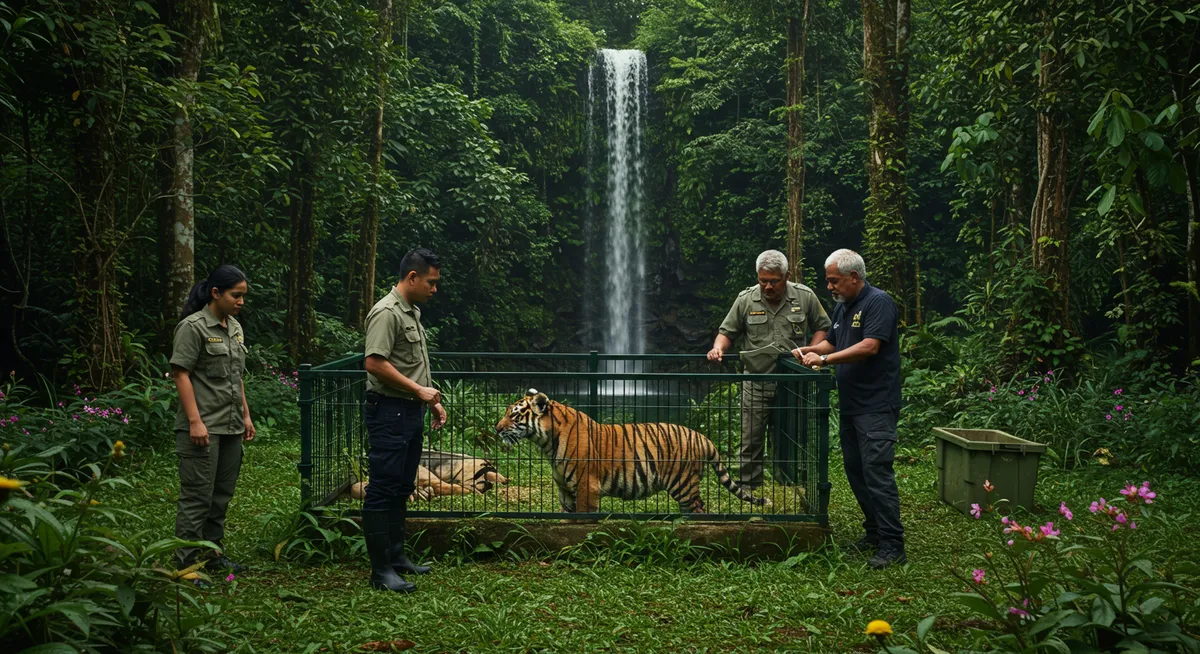
Kuala Lumpur Wildlife Conservation Efforts Guide
Table of Contents
Want to find the best nature experiences for this destination? Chat with our nature tourism specialist!
Get Nature TipsCategory: kuala-lumpur-wildlife-conservation-efforts
Kuala Lumpur Wildlife Conservation Efforts: A Comprehensive Guide
Having spent significant time exploring Kuala Lumpur's vibrant urban landscape and its surprising pockets of nature, I've gained a deep appreciation for the city's commitment to preserving its natural heritage. The topic of Kuala Lumpur wildlife conservation efforts is more critical than ever as urban development continues to expand. This guide delves into the various initiatives undertaken to protect the rich biodiversity that thrives within and around this bustling metropolis, from lush rainforest fragments to vital urban wetlands. Understanding these conservation strategies provides insight into Malaysia's dedication to environmental stewardship.
Understanding Kuala Lumpur's Unique Biodiversity
Kuala Lumpur, despite its metropolitan facade, is surprisingly rich in biodiversity, thanks to its proximity to lush rainforests and vital river systems. The city's wildlife conservation efforts are primarily focused on protecting species adapted to urban environments, as well as preserving key habitats. Visitors might encounter diverse bird species, playful macaques, and various reptiles even within the city limits. Indeed, I've personally spotted monitor lizards lounging by riverbanks within mere minutes of towering skyscrapers. These ecosystems are fragile, making proactive measures essential for their survival. Protecting these natural assets is not just about animals; it's about maintaining ecological balance and enhancing the quality of life for residents and visitors alike. Discover more about Kuala Lumpur's fascinating nature attractions.
Government Initiatives and Policy Frameworks
The Malaysian government plays a pivotal role in spearheading Kuala Lumpur wildlife conservation efforts through various departments and policies. Agencies like the Department of Wildlife and National Parks (PERHILITAN) are instrumental in enforcing wildlife protection laws, managing protected areas, and conducting research. Legislation such as the Wildlife Conservation Act 2010 provides the legal framework for combating illegal wildlife trade and ensuring responsible wildlife management. Furthermore, urban planning often incorporates green development principles to mitigate habitat loss. My personal experience has shown that these policies, while sometimes challenging to implement in a rapidly developing city, provide a strong foundation for future conservation successes, highlighting a national commitment to environmental sustainability.
Community Engagement and NGO Contributions
Beyond governmental action, grassroots movements and non-governmental organizations (NGOs) are central to Kuala Lumpur wildlife conservation efforts. Groups like the Malaysian Nature Society and Friends of Bukit Kiara actively engage in habitat restoration, public education, and advocacy. They organize volunteer clean-ups, tree-planting drives, and awareness campaigns, fostering a sense of shared responsibility among citizens. I've joined some of these community events and witnessed firsthand the passion and dedication of local volunteers. Their collaborative approach amplifies conservation impact, ensuring that diverse perspectives contribute to environmental stewardship. These initiatives demonstrate the power of collective action in safeguarding Kuala Lumpur's precious natural heritage for generations to come, complementing broader efforts by Tourist Nature to highlight eco-tourism.
Urban Green Spaces as Vital Sanctuaries
Kuala Lumpur's numerous urban green spaces are indispensable to its wildlife conservation efforts, acting as crucial ecological corridors and refuges. Parks like Perdana Botanical Gardens, KL Forest Eco Park, and Taman Tugu provide vital habitats for various species, particularly birds, insects, and small mammals. These areas offer pockets of respite from urban sprawl, allowing wildlife to thrive amidst the cityscape. My advice to visitors is always to take time to explore these green lungs; they truly are the best nature attractions in Kuala Lumpur. They also serve as important educational tools, connecting city dwellers with nature. Effective management of these spaces, including native plant propagation and minimizing human disturbance, is key to their ongoing success as wildlife sanctuaries. For more, explore our Kuala Lumpur Parks and Gardens Guide.
Challenges and the Future Outlook for Conservation
Despite significant advancements, Kuala Lumpur wildlife conservation efforts face ongoing challenges. Rapid urbanization, habitat fragmentation, and climate change pose constant threats to the city's biodiversity. Pollution, particularly from plastics and industrial waste, also impacts aquatic and terrestrial ecosystems. However, there's a growing commitment to green infrastructure and sustainable development. The future outlook involves strengthening cross-sector collaborations, leveraging technology for monitoring, and continuous public engagement. Efforts to promote responsible tourism and educate visitors about minimizing their environmental footprint are also gaining traction. From my perspective, continued investment in research and innovative conservation practices will be crucial for KL to meet its ecological goals.
Frequently Asked Questions
What is the biggest challenge for wildlife conservation in Kuala Lumpur?
How can tourists contribute to wildlife conservation in KL?
Are there specific animals being targeted for conservation in Kuala Lumpur?
Kuala Lumpur's journey in wildlife conservation is a testament to its commitment to balancing urban progress with ecological responsibility. The multifaceted Kuala Lumpur wildlife conservation efforts, ranging from governmental policies and active NGO participation to the preservation of vital urban green spaces, underscore a collective ambition to safeguard the city's unique natural heritage. While challenges persist, the proactive steps taken reflect a hopeful future for biodiversity. Continue your exploration of Malaysia's natural wonders and see how your visit can positively impact local conservation initiatives. Dive deeper into the beautiful best nature attractions in Kuala Lumpur.